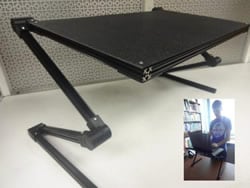Joshua Pearce (MSE/ECE) was interviewed for Are Sustainable Energy Jobs Sustainable in Epoch Times (circulation 1.3million).
Pearce was also interviewed on plug and play solar for the Radio Alexandria’s program The Next Chapter audio show.
Pearce is quoted in What’s the Difference Between Solar Panels? in Machine Design.
What’s the Difference Between Solar Panels?
Solar panels or photovoltaics (PVs) are not new in terms of the technology. However, manufacturing processes, cost reduction, and new research has some engineers thinking that photovoltaics will rival traditional power sources, such as coal. How important is Big Solar going to be? And what are the differences between the different types of photovoltaics?
“Solar workers have outnumbered coal workers in the U.S. for some time, but now their ranks have swollen to surpass even the oil and gas industry,” notes Joshua Pearce, Associate Professor of Material Science and Engineering at Michigan Technology . “It is not uncommon to have solar power be the less expensive option—lower-level cost of electricity—for both homeowners and businesses. This is driving a positive feedback loop, where additional growth is expected. The cumulative global market for solar PV is expected to triple by 2020 to almost 700 gigawatts (GW), with annual demand eclipsing 100 GW in 2019.”
Read more at Machine Design, by Jeff Kerns.
In Print
Joshua Pearce (MSE/ECE) co-authored a paper, “Feeding Everyone if the Sun is Obscured and Industry is Disabled,” published in the International Journal of Disaster Risk Reduction.
In the News
Joshua Pearce (MSE/ECE) is quoted in Trump’s Deregulatory Ambitions Could Realize $70B More for US Solar in Solar Reviews.
Countries like the United Kingdom, the Netherlands, and Switzerland already encourage plug-and-play solar. Even the Czech Republic permits it! —Joshua Pearce

